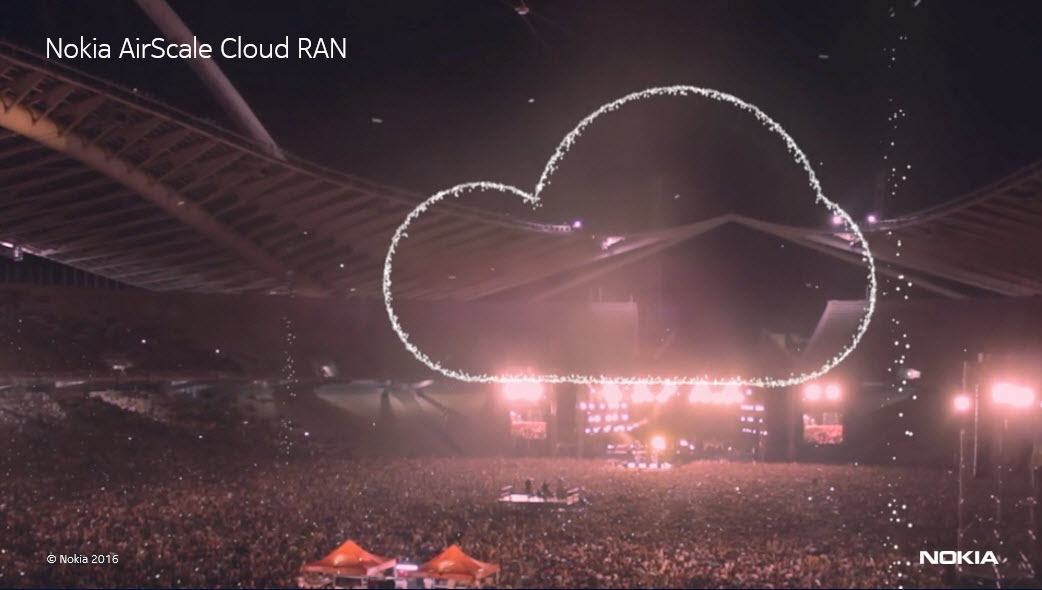- Trial architecture to evaluate how cloud-optimized radio access macro network architectures will enable smooth operator transition from 4G to 5G services and IoT
- Results show macro Nokia AirScale Cloud RAN running on AirFrame NFV infrastructure meets all key performance criteria to deliver same performance level of today’s RAN architecture with added efficiciency and scalability of cloud technology
12 December, 2016
Espoo, Finland – Nokia and Vodafone have trialled the use of cloud-based radio access technology for macro networks to evaluate how it will enable a smooth transition from 4G to 5G and meet the connectivity demands expected from the next-generation wireless platform together with the Internet of Things.
Nokia Cloud RAN architecture enables operators to use their radio assets more efficiently to meet future connectivity needs, with the Nokia AirScale Cloud RAN platform running on the AirFrame NFV infrastructure and splitting baseband processing functionality between real-time and non real-time functions. As a result, time-critical functions can be performed closer to end users at the edge of the network, while serving a wider area with Ethernet-based fronthaul providing connectivity to the virtualized functions. Non-time-critical functions are centralized and virtualized in an NFV infrastructure platform located at the edge of the radio access network, offering a view across the network and allowing radio capacity to be scaled when and where it is required.
The trial, which took place at Vodafone’s testing facility in Italy, used the Nokia Cloud RANplatform to evaluate the performance of centralized 5G-ready architecture, measuring peak data rates as well as download and upload speeds in a range of scenarios on the macro network, containing high power macro cellular base stations. As a result, the trial found that the Nokia Cloud RAN achieved all of Vodafone’s key performance criteria for throughput, capacity and resiliency, demonstrating that a cloud-based RAN architecture can provide the same level of high-quality service provided by a conventional LTE network, but with the added scalability, flexibility and efficiency delivered by cloud technology. Nokia and Vodafone will continue to collaborate on this project with the aim of deploying the technology commercially.



















